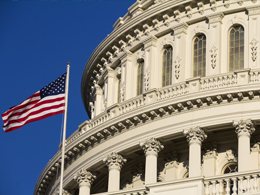What will drive markets after Trump’s victory?
by Rob Waldner, Chief Strategist, Head of Multi-strategy, Invesco Fixed Income, Invesco
In a surprising outcome, American voters elected Donald Trump as the next president of the United States. This result was viewed as unlikely by the market. In the short term, the market reaction may be driven by increased uncertainty. However, over the medium term, Invesco Fixed Income expects the economic impact of Trump’s policies to drive markets.
Although much of the attention of the campaign has been on personalities and temperament, there has been some basic policy framework laid out by the Trump campaign. There is much uncertainty about what will actually be implemented after he takes office in January, but we believe there are a few key policy elements that will likely be implemented first:
- Fiscal easing. Trump has promised to lower corporate and individual tax rates. This will potentially boost growth across the board in the U.S. In particular, the reduction in corporate tax rates is likely to lead to large-scale repatriation of overseas earnings by U.S. corporations, in our view. We believe these repatriated earnings are also likely to boost corporate spending.
- Deregulation. Trump has promised deregulation of the U.S. economy. In particular, he has indicated a desire to repeal the Affordable Care Act (also known as Obamacare), reduce regulation on the energy industry and amend the Dodd-Frank Act. These changes are also likely to boost U.S. growth in the near term, in our view.
- Trade. Trump won on his anti-trade message. In our view, he will have to take some action in the near term on the trade issue, and, as president, he has quite a bit of power to implement tariffs and change trade deals. We would expect some impediments to free trade to be put in place in the near term. Such measures may have a medium-term impact on global growth.
Uncertainty has clearly increased overall with this election outcome, and this is likely to put near-term pressure on risk assets across the board. In the medium term, however, the economic responses and exact policy prescriptions will likely determine the path for risky assets.
Near-term market impacts, in our view, may be:
- Higher U.S. interest rates. Stronger growth in the U.S. should push U.S. interest rates higher across the board. While volatility could concern the Federal Reserve (Fed), we believe the Fed will still raise rates in December and will likely raise rates next year as well. Bond yields will likely go higher. Inflation break-evens should also go higher.
- Stronger U.S. dollar. Stronger growth, fiscal stimulus and higher interest rates all point to the likelihood of a stronger dollar across the board.
- Headwinds for emerging markets. A stronger dollar and potential action on trade are all negative for emerging markets. We look for weaker emerging markets currencies and continued headwinds for emerging markets growth.
- Increased volatility in equity and credit. However, the ultimate impact on equities and credit will likely depend upon the exact policy mix implemented.In general, stock values fluctuate, sometimes widely, in response to activities specific to the company as well as general market, economic and political conditions.
This post was originally published at Invesco Canada Blog
Copyright © Invesco Canada Blog















